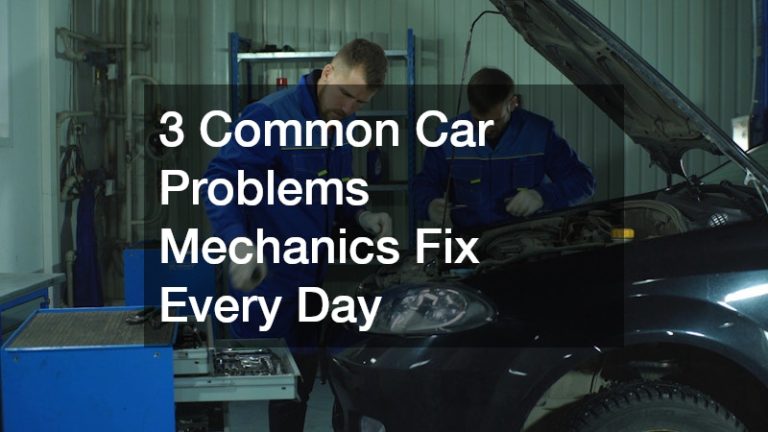
Owning a truck is about much more than simply getting from point A to point B—it’s about maintaining performance, reliability, and long-term durability. Trucks face unique challenges compared to smaller vehicles: they often carry heavy loads, navigate rough terrain, and endure long-distance hauls that put extra strain on engines, brakes, suspension systems, and tires. Without consistent attention, even minor wear and tear can quickly evolve into costly mechanical failures or safety hazards. Many truck owners focus only on what they can see—dents, scratches, or worn tires—while overlooking critical preventive maintenance that keeps their vehicle running smoothly and safely.
The key to long-lasting performance lies in a proactive approach that combines regular mechanical upkeep, thorough inspections, and carefully considered upgrades. Routine service, timely repairs, and attention to both essential systems and optional enhancements work together to preserve reliability and functionality. Preventive maintenance not only addresses current issues but also anticipates potential problems, reducing the likelihood of unexpected breakdowns and costly emergency repairs.
Whether your truck serves as a workhorse for hauling cargo, a reliable partner for outdoor recreation, or simply a daily driver, proactive care protects your investment and enhances the overall driving experience. This guide highlights ten simple, actionable steps every truck owner can follow to ensure their vehicle remains dependable, safe, and efficient over the years. By taking these measures, owners can prevent major problems before they arise, reduce stress associated with repairs, and enjoy a smoother, more reliable driving experience. Following this structured approach allows truck owners to get the most out of their vehicles while extending their lifespan and maintaining peak performance under any conditions.
Step 1: Schedule Regular Truck Service
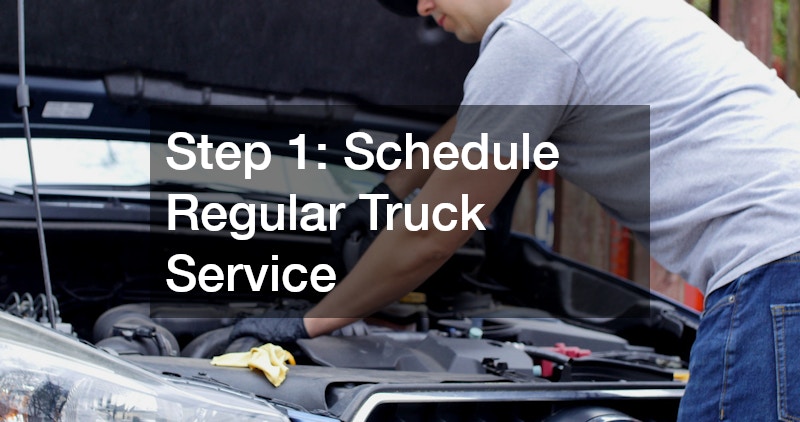
Routine maintenance is the foundation of a well-performing truck. Scheduling professional truck service ensures that engines, brakes, fluids, and other critical systems are checked and maintained regularly. Even minor issues can escalate into major repairs if left unaddressed, making preventive service a cost-effective strategy.
During service visits, technicians perform essential inspections including oil changes, filter replacements, and diagnostic tests. Regular service also allows mechanics to identify early signs of wear in transmission systems, suspension components, and steering linkages. Consistently adhering to scheduled service not only improves reliability but also prolongs the life of expensive components.
Professional truck service provides peace of mind, knowing that potential problems are detected before they impact safety or performance. By keeping a maintenance log and following manufacturer recommendations, truck owners can plan repairs efficiently and avoid unexpected downtime, ultimately saving time and money over the lifespan of the vehicle.
Step 2: Inspect and Maintain Your Brakes
Proper brake repairs are critical to truck safety. Braking systems endure significant stress, especially on heavy-duty trucks or those that haul loads regularly. Worn brake pads, damaged rotors, or low hydraulic fluid can compromise stopping power and increase the risk of accidents.
Routine brake inspections include checking pads, rotors, calipers, and brake lines. Identifying wear early allows repairs to be scheduled before performance is significantly affected. For trucks that regularly carry heavy cargo, frequent monitoring of brake components is particularly important, as even small reductions in braking efficiency can have serious consequences.
Maintaining brakes also improves driving confidence and ensures compliance with safety standards. A well-maintained system reduces strain on related components and improves fuel efficiency, since the vehicle operates more smoothly. Investing in regular brake service is a small step with a large impact on long-term safety and performance.
Step 3: Rotate and Replace Tires as Needed
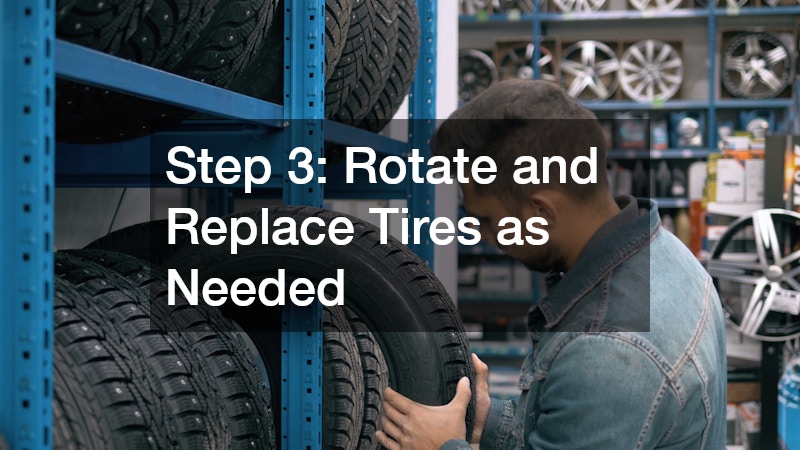
High-quality tires and proper maintenance are essential for performance and safety. Rotating tires periodically and replacing worn ones ensures even tread wear, better traction, and longer lifespan. Investing in tires for sale that match your truck’s specifications can prevent uneven wear and improve handling.
Truck tires are exposed to varying loads, road surfaces, and weather conditions, making them prone to irregular wear patterns. Regular checks allow drivers to identify cracks, bulges, or tread wear before these issues escalate into blowouts or performance problems. Properly inflated tires also enhance fuel efficiency and reduce stress on suspension components.
Working with knowledgeable tire retailers or service centers helps ensure the correct type of tire is selected for your truck’s specific use, whether for off-road, hauling, or highway driving. Keeping tires in top condition improves safety, stability, and overall driving comfort.
Step 4: Maintain Your Battery and Electrical Systems
A truck’s battery and electrical systems are essential for reliable operation. Regular inspections and mobile battery replacement when needed prevent unexpected failures that can leave you stranded. Electrical issues can affect lights, ignition systems, and other critical functions, making proactive care essential.
Battery maintenance includes checking terminals for corrosion, testing voltage, and ensuring secure connections. For trucks with additional accessories, such as auxiliary lights or custom electronics, maintaining electrical integrity is even more important. Mobile replacement services add convenience by allowing drivers to get back on the road quickly without towing the vehicle to a service center.
Proactive battery care ensures reliability in all driving conditions, from cold mornings to long-haul trips. Combining this with regular electrical inspections protects other vehicle systems and reduces the risk of costly, cascading failures.
Step 5: Inspect and Upgrade Suspension and Steering
A well-maintained suspension and steering system is crucial for handling, comfort, and safety. Worn shocks, struts, or alignment issues can reduce stability, increase tire wear, and negatively impact braking performance. Regular inspections help identify parts that need repair or replacement before problems worsen.
Upgrades from truck modification shops or professional service centers can enhance durability, especially for trucks used in off-road conditions or for heavy hauling. Reinforced components and specialized suspension systems improve ride quality and reduce stress on other mechanical parts.
Maintaining the suspension and steering not only increases comfort but also ensures predictable handling and responsiveness, which is particularly important for trucks carrying heavy loads. Routine checks prevent costly repairs and extend the life of tires and brakes.
Step 6: Utilize Quality Aftermarket Parts
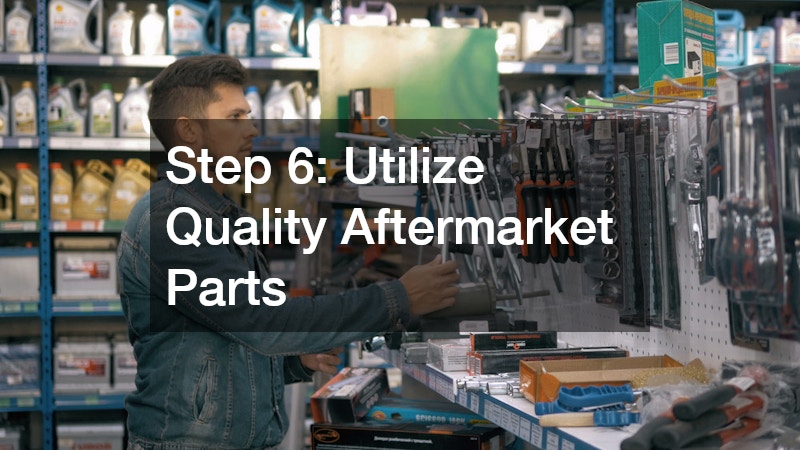
When replacement parts are required, using aftermarket truck parts can provide a balance of quality and cost-effectiveness. Modern aftermarket options often meet or exceed OEM standards and are widely available, allowing for timely repairs.
Choosing reliable aftermarket parts for engines, brakes, suspension, or cosmetic components ensures that your truck maintains performance and reliability without overspending. Partnering with reputable suppliers and shops helps avoid low-quality components that could cause premature failure.
Strategic use of aftermarket parts supports long-term maintenance goals, allowing owners to upgrade or replace components efficiently while maintaining safety, durability, and value. Combined with regular service, these parts keep trucks running smoothly for years.
Step 7: Add Accessories to Improve Comfort and Utility
High-quality local truck accessories such as bed liners, tool organizers, or cargo management systems can enhance functionality and protect your truck from wear and tear. Properly installed accessories also reduce damage caused by heavy cargo or harsh conditions.
Even interior upgrades, including power window kits or seat enhancements, contribute to comfort and convenience during long drives. Ensuring that these accessories are installed by professionals or qualified service centers prevents electrical or mechanical interference with vehicle systems.
Thoughtful accessory upgrades not only improve usability but also protect the truck’s long-term condition. Durable, well-maintained components minimize the risk of interior or exterior damage while enhancing the driving experience.
Step 8: Protect Your Truck’s Exterior
Exterior maintenance preserves your truck’s appearance and prevents long-term damage. Treatments such as wax, sealants, or protective coatings shield the vehicle from corrosion, sun damage, and road debris. Regular cleaning prevents buildup that can compromise paint or body panels.
When repairs are needed after scratches, dents, or minor collisions, a skilled local auto repair center can restore bodywork while maintaining structural integrity. Combining preventive care with timely cosmetic repairs ensures the truck retains both value and aesthetics over time.
Investing in exterior protection safeguards your truck against environmental exposure, maintains resale value, and complements ongoing mechanical maintenance. A well-cared-for exterior also reflects professionalism for trucks used in work or business.
Step 9: Maintain Transport and Towing Readiness
For truck owners who rely on their vehicle for hauling heavy loads or undertaking long-distance travel, ensuring readiness for vehicle transport or towing is essential. Regular inspections of hitches, tow cables, and related systems help prevent failures during critical operations, reducing the risk of accidents or damage to both the truck and its cargo. A single oversight, such as a loose connection or worn safety chain, can lead to costly repairs or dangerous situations on the road.
Proper preparation goes beyond basic checks. Verifying weight limits, inspecting connections, and confirming the integrity of safety chains ensures that your truck is capable of handling the demands of towing while remaining compliant with safety regulations. Being mindful of how the vehicle is loaded, including distribution of weight, also plays a key role in maintaining stability and preventing undue stress on the drivetrain, brakes, and suspension.
Routine servicing of towing equipment is equally important. Lubricating moving parts, replacing worn components, and ensuring that electrical connections for trailer lights are functioning properly all contribute to a safe and smooth towing experience. These steps not only protect the truck and its cargo but also enhance driver confidence and minimize stress during long trips.
Step 10: Stay On Top of Tires, Fluids, and Minor Repairs
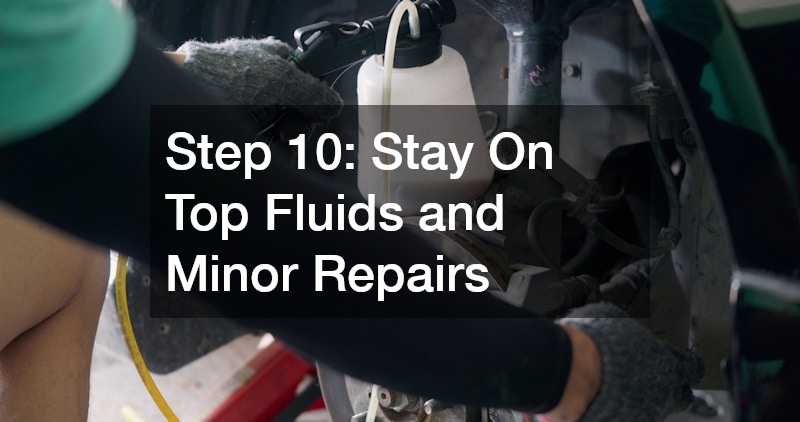
Routine checks of fluids, belts, hoses, and other minor components are a crucial part of truck maintenance, helping to prevent unexpected breakdowns and costly repairs. Ensuring that essential fluids such as engine oil, coolant, brake fluid, and transmission fluid are topped off supports engine health, maintains smooth operation, and prolongs service intervals. Even small leaks or worn hoses can escalate into major problems if not identified early, so regular visual inspections and functional tests are key.
Tires also play a vital role in safety and performance. Regularly inspecting them for tread wear, punctures, and proper inflation helps maintain stability, traction, and fuel efficiency. When replacement is necessary, selecting high-quality tires for sale appropriate for your truck’s load and driving conditions ensures reliable handling and longevity. Ignoring tire maintenance can lead to uneven wear, reduced braking performance, or even blowouts, all of which pose safety risks.
Small repairs, such as adjusting brakes, fixing fluid leaks, or addressing minor accessory issues, should be handled promptly to prevent them from affecting other systems. For example, a slow brake adjustment or minor fluid leak can cause additional strain on the engine or suspension over time, resulting in more extensive and expensive repairs.
By consistently monitoring these minor systems and addressing problems as they arise, truck owners maintain reliability, safety, and optimal performance. Coupling these routine checks with professional truck service ensures that all maintenance is thorough, accurate, and long-lasting. Over time, these simple steps protect your investment, minimize downtime, and allow your truck to remain dependable, efficient, and safe for years of heavy use.
Keeping a truck running smoothly requires more than occasional attention—it demands a combination of professional care, preventive maintenance, and thoughtful upgrades that address both mechanical performance and everyday usability. Regular truck service ensures that engines, brakes, and suspension systems remain in optimal condition, while timely brake repairs and tire inspections prevent unexpected failures that could compromise safety or lead to costly downtime. Monitoring battery health through mobile battery replacement services, checking fluid levels, and reviewing suspension and steering components all contribute to long-term reliability, allowing the truck to handle heavy loads, long trips, or challenging terrain without issue.
Strategic upgrades can further enhance the driving experience and the truck’s overall functionality. Installing high-quality aftermarket truck parts can provide durable replacements or performance improvements without the cost of OEM components. Adding local truck accessories, such as bed liners, tool organizers, or protective mats, safeguards the vehicle against wear while improving convenience. Interior enhancements, including power window kits, improve comfort and ease of use, especially during long drives or daily work routines.
By consistently following these ten steps, truck owners can enjoy a dependable, efficient, and well-maintained vehicle for years. Prioritizing preventive care, professional service, and well-chosen upgrades turns routine maintenance into a structured, manageable process rather than a reactive task. This approach maximizes safety, enhances performance, and protects long-term value, giving truck owners peace of mind that their vehicle is ready for any journey, workload, or challenge.
